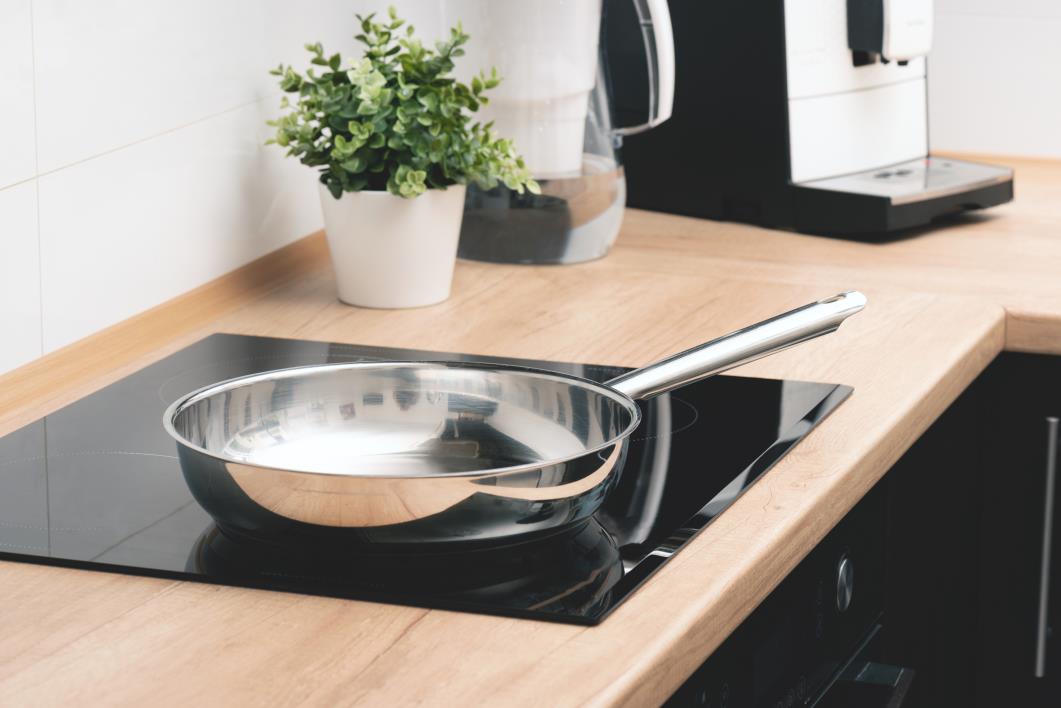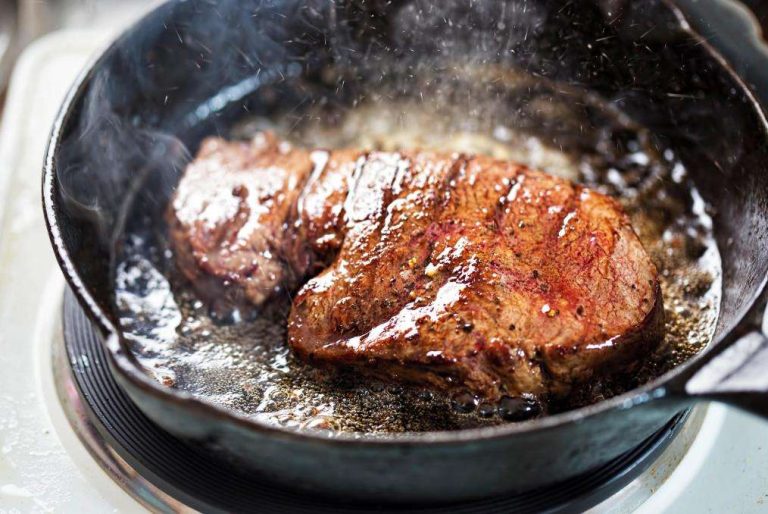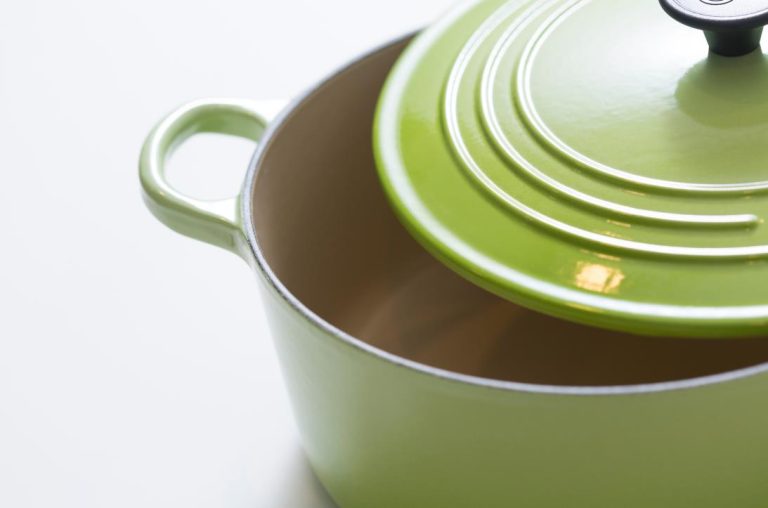With a global market of 2.2 billion U.S. dollars, non-stick cookware has transformed the culinary world. And one of the most popular choices is the non-stick pan.
While a popular option, there’s always confusion regarding the best non-stick pan materials, especially for businesses looking to buy in bulk. This guide mentions all the information you need to know to make an informed purchase decision.
Read till the end so you don’t miss out on anything important.
What is a non-stick pan?
A non-stick pan is a cooking pan coated with a material that prevents food from sticking to the pan’s surface. Because the food doesn’t get stuck to the pan, flipping and removing the food becomes easy, making the cooking experience labor-saving.
Non-stick pans are usually made of aluminum or stainless steel. These are coated with a material such as ceramic, Teflon, or silicone. The pan is manufactured using two basic techniques: steel coating and steel cladding.
Steel coating

Steel coating is a process where a thin layer of steel is applied to the surface of a pan. With non-stick pans, the steel coating provides an extra layer of protection for the pan, which can help prevent scratches, dents, and other types of damage.
This also makes it more durable and resistant to wear. Improve the overall performance of the pan, as the steel coating can help distribute heat more evenly across the pan’s surface.
These pans may require more careful handling, as the steel coating can be prone to damage if the pan is scratched or banged against hard surfaces.
Steel cladding
Steel cladding is a process in which a layer of steel and other materials are bonded to the surface of a pan using heat and pressure. Non-stick pans made using the steel cladding process don’t react to food, keeping the taste intact and saving it from sticking to the bottom.
Moreover, steel cladding pans are versatile, durable, and easy to clean. But when compared to other options, these non-stick pans are much more expensive.
Overall, steel cladding is a more durable and long-lasting non-stick pan process than steel coating. And it can be used to create pans that are very resistant to wear and corrosion.
So, for businesses looking to sell products that are durable, high-end and consumer-friendly, non-stick cookware with steel cladding is highly recommended.
The different non-stick pan base materials explained
The type of base material used in making the best non-stick pan determines its performance, durability, and usage. We have listed a few of the most common ones below:
Stainless steel

Stainless steel is made by using a mix of chemical components including iron, carbon, nickel, and most importantly chromium.
Usually, two types of stainless-steel non-stick pans are available:
- Impact bounded: This non-stick pan consists of a multi-layered stainless-steel disc at the bottom of the pan. It allows for even heat distribution for uniform cooking.
- Fully clad: Fully clad stainless steel pans are made from a layer of stainless steel bonded to the surface of the pan using cladding. This creates a durable pan that is resistant to wear and allows the pan to heat up quickly and evenly.
Pros of non-stick stainless steel pans
- Stainless steel non-stick pans are versatile, making them compatible with all cooking surfaces, including traditional and electric stoves.
- You can easily slip them into the oven, heat or bake your food, and put them directly on the table for a fresh serving.
- Stainless steel cookware is highly tensile and durable, making it easy to work with.
- Ideal pans for searing steak or cooking food on high heat.
Cons of non-stick stainless steel pans
- Can be expensive.
- Wears quickly, so you need to replace it sooner.
Aluminum
A non-stick aluminum pan, as the name suggests, is made of aluminum, a good heat conductor.
The most commonly used aluminum non-stick pan is the hard-anodized aluminum pan. The simple aluminum pan goes through an electrochemical process called anodization to transform into better cookware.
This process hardens the surface of the aluminum and makes it more durable and resistant to wear and tear. It also helps improve the pan’s non-stick properties, making it easier to cook and clean afterward.
Hard anodized aluminum pans are generally considered more durable and longer-lasting than traditional non-stick pans.
It is also more resistant to scratches and stains, which can help extend the pan’s life. Additionally, because the non-stick surface is created through anodization and not a coating, it’s less likely to peel or flake off over time.
Hard anodized aluminum is also considered a healthier option than other non-stick pans, as it does not release harmful chemicals when heated, and its non-stick properties are not affected by metal utensils.
Buy Wholesale Cookware and Start Scaling up with Us Today
Contact us and connect with a sales rep to get a free quote.
Pros of non-stick aluminum pans
- Durable and lightweight.
- They are versatile and can be used for frying, sautéing, and boiling.
- Safe for use on various cooking surfaces, including gas, electric, and induction stovetops.
- As aluminum is a good conductor of heat, the pan helps cook food evenly.
- It is affordable and easy to clean.
Cons of non-stick aluminum pans
- It is more expensive than a standard aluminum non-stick pan.
- A hard anodized pan is heavier.
- It is not induction compatible.
Cast iron
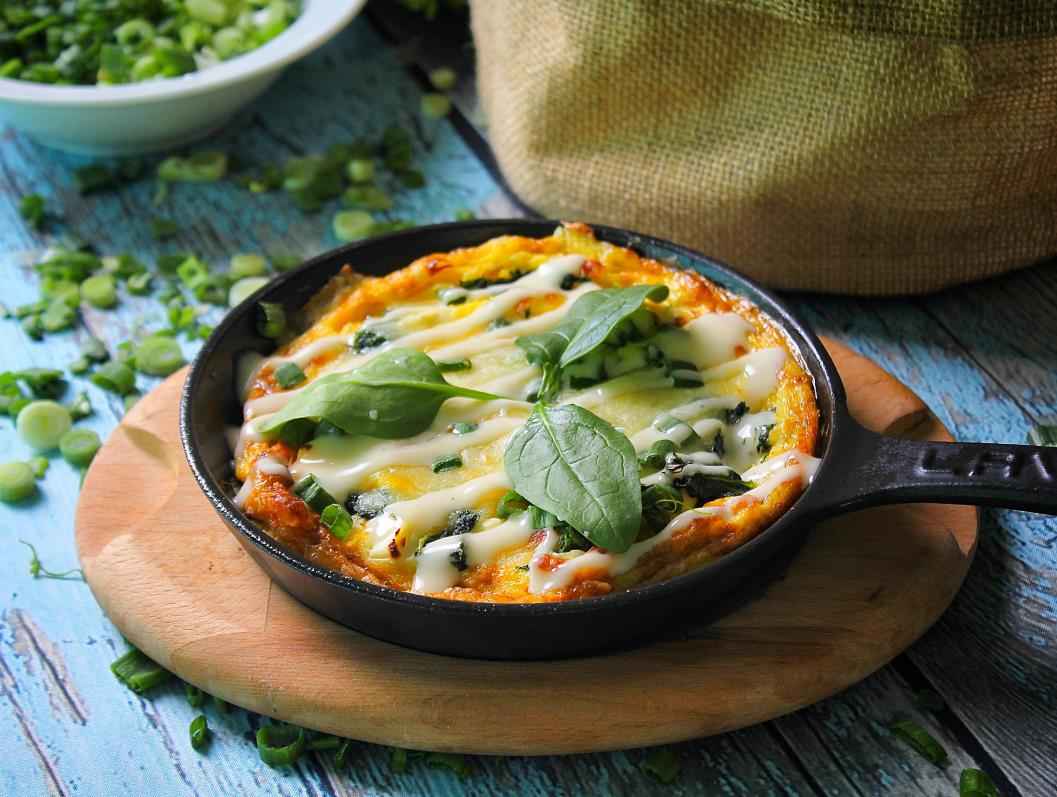
Made from a heavy, tensile material, the cast iron non-stick pan is known for its durability and heat retention properties. Cast iron cookware, including pans, is made by pouring molten iron into a mold and allowing it to cool and solidify.
These pans aren’t coated with any non-stick surface. But, with proper seasoning and care, the naturally rough surface of the cast iron can develop a non-stick patina, allowing food to cook without sticking.
Seasoning is a process of heating oil on the pan’s surface to create a protective layer that gives it a non-stick surface and stops the food from sticking to it.
Pros of non-stick cast iron pans
- It distributes heat evenly and can be used on any type of stovetop, including induction. It can also be used in the oven or grill.
- These are virtually indestructible.
- They are compatible with most cooking surfaces.
- Affordable.
- They are versatile and can be used for various cooking methods, including sautéing, frying, baking, and broiling.
Cons of non-stick cast iron pans
- Cast non-stick iron pans are heavy.
- Requires regular and proper seasoning to avoid rusting.
- Cast iron pans can react with acidic food, which is why they aren’t recommended for acidic dishes.
Carbon steel
A carbon steel pan is made from a mixture of iron and carbon. They have similar properties to cast iron pans but are generally thinner and lighter and made to be more responsive to temperature changes. They can also be seasoned to develop a natural non-stick patina.
Carbon steel pans are extremely versatile; they can be used for sautéing, cooking and grilling. Carbon steel pans also have a smooth surface that is naturally resistant to sticking, and with regular use and proper care, the surface improves over time.
Pros of non-stick carbon steel pans
- They heat up quickly and evenly.
- The carbon steel pans are great for cooking at high temperatures.
- They are also easy to clean.
- Compared to cast iron pans, these are lightweight and easy to handle.
- They are also less prone to rusting than cast iron (they only rust if not dried and oiled properly after cleaning).
Cons of non-stick carbon steel pans
- These pans are reactive to acidic food. Cooking sauces or other acidic food without seasoning can alter the flavor.
- The more you use the pan, the more it changes in shape and color.
Like cast iron pans, carbon steel pans should be seasoned regularly, dried, and oiled after cleaning to maintain their non-stick surface.
Non-stick pan coating material
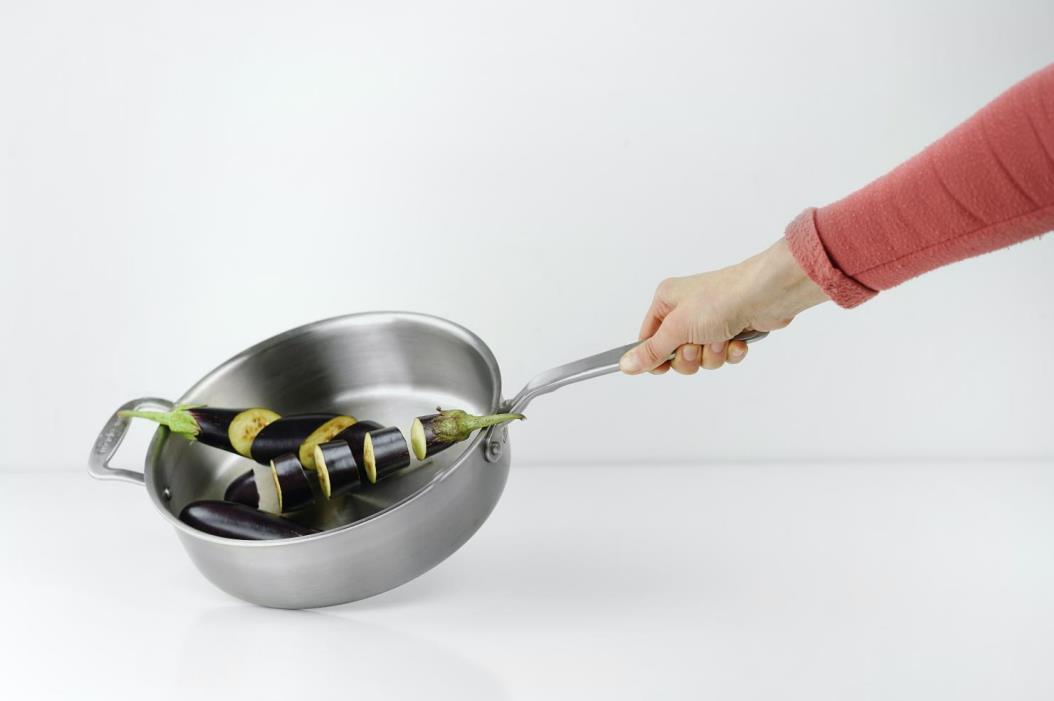
Non-stick coating materials refer to a coating applied to cookware’s surface to make it resistant to sticking. These coatings are designed to reduce the need for oils and fats. Thus, making cooking healthier and cleaning up much easier.
The non-stick coating is usually made from a synthetic polymer, ceramic, silicone, or stone-derived materials. It creates a smooth surface, which prevents food from sticking to the pan’s surface and allows users to flip, sauté, or move the food easily.
It’s important to note that non-stick coatings are not permanent. Hence, it will wear out over time due to abrasion, scratching, and overheating. To prolong their durability, use low to medium heat and avoid washing them with abrasive materials.
Businesses that deal with high-end kitchen utensils know the importance of having a strong coating. Here are some common non-stick pan coating materials:
Polytetrafluoroethylene (PTFE)
First developed in the 1940s by DuPont, Polytetrafluoroethylene (PTFE) is a synthetic polymer that is commonly known by the brand name Teflon. It was discovered that PTFE has a very low friction rate and a high heat and chemical resistance.
When PTFE is applied as a coating to cookware, it creates a surface highly resistant to sticking. Thus, making it popular for non-stick cookware. However, concerns have been raised about the safety of using them.
When PTFE is heated to high temperatures, it can release harmful chemicals such as perfluorooctanoic acid (PFOA) into the air. Therefore, make sure that the cookware your purchase is PFOA-free.
Pros of Teflon pan
- Stops the food from sticking to the surface when cooking.
- The PTFE coating makes it easier to clean the non-stick cookware.
- Can safely be used in ovens.
Cons of Teflon pan
- Coating starts to break down at temperatures greater than 260C.
Teflon pans should be immediately replaced if the surface is damaged. Damaged non-stick cookware can release the PTFE into the food, which is unsafe for consumption.
Ceramic coating
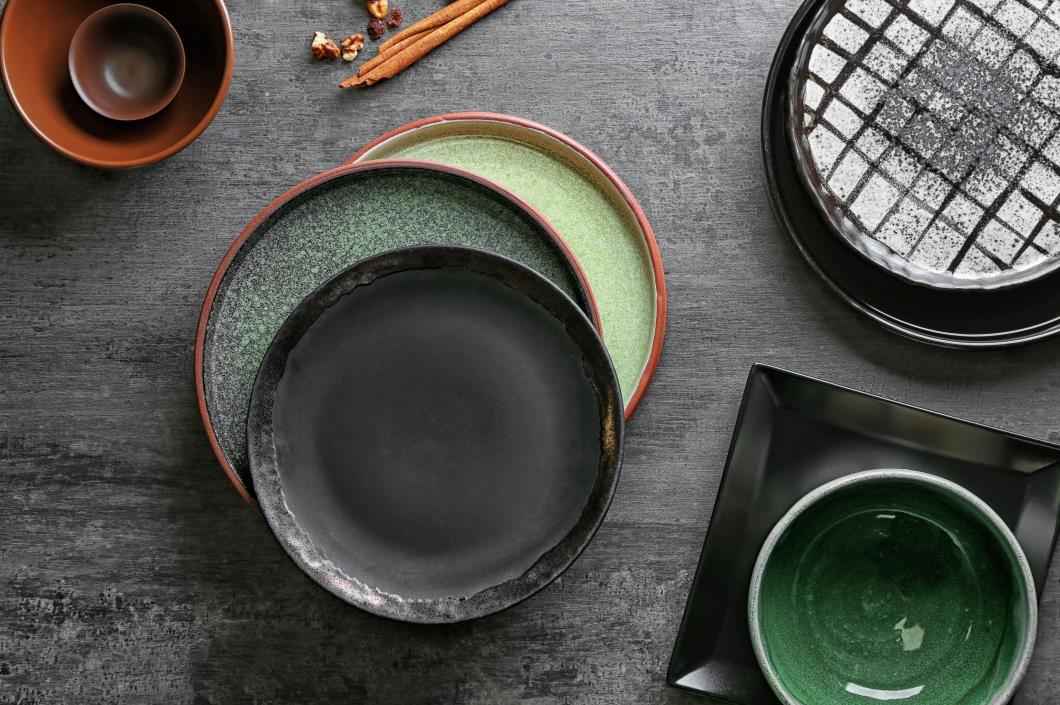
Ceramic-coated pans are an ideal choice for people who are looking for cookware made from a natural material. But despite its name, pans with ceramic coatings aren’t completely made from natural materials. Real ceramic cookware like those used in baking isn’t non-stick and adds a glossy look to utensils.
When it comes to non-stick pans, they are made from silicon. And because they have a shiny surface like glassware, these pans are termed ceramic pans. The silicon is transformed into a gel-like product called sol-gel and made into pans and other cookware.
But since the gel is self-sacrificing, the coating degrades over constant use. Therefore, it might need replacement after some time.
Pros of ceramic-coated pans
- These are also better for the environment as they are free from PFOA (perfluorooctanoic acid) compared to Teflon pans.
- The ceramic pans look good and come in various colors.
Cons of ceramic-coated pans
- Less suitable for high-heat cooking and can scratch easily compared to Teflon.
- Degrades quickly.
- These pans are not dishwasher safe.
Enamel
Available in various vibrant colors, enamel-coated pans are another great option for the non-stick pan coating material. It makes cooking easy and safe.
These pans are made from a mix of cast iron and enamel. The core consists of cast iron bonded with enamel from inside and outside. Although enamel is a glass-like non-stick pan material, adding it to the cast iron adds to the cookware’s durability.
Pros of enamel-coated pans
- It is resistant to high heat.
- Compatible with all cooktops.
- It is safe to use in the oven.
- The enamel-coated pans do not need to be seasoned.
- It keeps the food hot for longer.
- These pans are non-reactive to acidic food.
- It comes in various colors.
Cons of enamel-coated pans
- They are not entirely non-stick. You need to grease the surface with oil so the food doesn’t stick to the base.
- These pans are heavy.
- It takes longer to heat up.
- The enamel pans can crack and break quickly.
How to choose a non-stick pan based on its material?

Choosing the right non-stick pan can be tricky, especially if you’re new in the business and it’s your first time shopping for it.
Thus, here are some of the things you should consider when buying a non-stick pan for your business.
Durability
Durability is perhaps one of the most important things to look at when choosing a non-stick pan. People return to businesses that offer the most durable non-stick pans because quality is what most people seek.
So, for businesses dealing in bulk kitchen accessories like non-stick cookware, ensure that the material used in the making is durable, resistant to high heat, and doesn’t scratch or chip off easily, so it lasts long.
Versatility
Good non-stick frying pans are compatible with multiple cooktops, from the standard stove to induction ones. Moreover, most can be used for grilling, sautéing, and baking purposes.
A versatile non-stick skillet is a one-stop solution for all cooking problems, just like a good knife that cuts down on the preparation time.
Safe for usage
Non-stick cookware previously had a risk of containing chemicals like PFOA, which were considered harmful to humans.
Over time, most leading kitchenware manufacturers have shifted their focus and energy to making PFOA utensils that are 100% safe for usage.
So, when buying in bulk for your business, ensure that the products are free from chemicals.
Price
Best non-stick pan materials aren’t cheap. Manufacturers use high-end materials in making kitchen utensils like non-stick skillets and knives. Therefore, if your business value quality, be willing to pay slightly higher.
Buy Wholesale Cookware and Start Scaling up with Us Today
Contact us and connect with a sales rep to get a free quote.
Should you sell non-stick pans?
Non-stick pans are one of the most popular products in the non-stick cookware market, expected to grow at a CAGR of 5%. With high demand and promising stats, getting into the non-stick business makes a lot of sense.
However, with that said, it is essential that you sell only the top-quality products that keep your customers happy and reduces the churn rate.
As far as choosing the best quality material is concerned, we have discussed that in detail above. But here’s a brief overview.
Each non-stick pan material serves a different purpose. Hence the best non-stick pan material is one that doesn’t wear off quickly, can stand high temperatures, is safe to use and is versatile.
Thus, businesses looking to buy in bulk should ensure they get absolute value for their money.
Final word
Despite the wide variety of non-stick pan materials available, your business’s success would depend on the quality and the manufacturer’s commitment to providing the best services.
Therefore, choose brands that deal in high-end non-stick pans at good prices.If your business is looking for good deals regarding bulk buying kitchen utensils such as knives, get in touch, and we will respond promptly.
